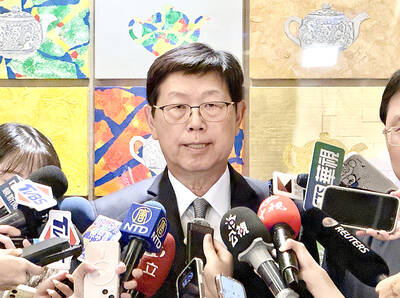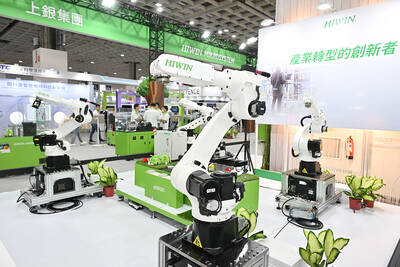The US economy may be in for a long period of soft growth after employers hired the fewest number of workers in eight months last month and the unemployment rate rose to 9.1 percent.
Nonfarm payrolls increased 54,000 last month, the US Labor Department said on Friday, just over a third of what economists had expected.
However, analysts saw little chance the economy would slide back into recession, given that temporary factors like high gasoline prices and supply chain disruptions from the earthquake in Japan were constraining growth.
“The recovery has not been aborted. The economy is not falling into a double-dip,” said Sung Won Sohn, an economics professor at California State University in the Channel Islands. “This weakness, however, is a warning shot across the bow of the economy.”
The broadly weak report -confirmed a loss of economic momentum already flagged by other data from consumer spending to manufacturing.
The department said it found “no clear impact” on the jobs figures from the tornadoes and flooding in the US midwest and south.
The sharp slowdown in job creation accompanied signs of softening growth overseas and was troubling news for US President Barack Obama, whose chances of re-election next year could hinge on the health of the economy.
High gasoline costs hurt consumer spending in the first quarter, when economic growth was held to a 1.8 percent annual pace after expanding at a 3.1 percent rate at the end of last year.
Wal-Mart chief executive Mike Duke on Friday said the “paycheck cycle,” where people stock up around payday and then spend less as the month progresses and cash runs out, is more pronounced than it has ever been.
The employment data lent more fuel to talk about the need for the US Federal Reserve to extend its asset purchasing program when it expires this month, but officials at the central bank have set a high bar for any further monetary easing.
With the Obama administration and lawmakers discussing how best to trim US spending as they try strike a deal on raising the debt limit, the economy could be left to its own devices.
Ratings agency Moody’s on Thursday said it would consider cutting the nation’s credit rating if progress is not made by the middle of next month in talks to raise the US$14.3 trillion debt ceiling.
“One look at the jobs report should show the White House it’s time to get serious about cutting spending and healing our ailing economy,” US House of Representatives Speaker John Boehner said.
Treasury debt prices and interest rate futures rose, signaling that traders believe mounting signs of economic weakness will lead the US central bank to keep interest rates pressed to zero for a prolonged stretch.
A Reuters survey on Friday -predicted the Fed would leave interest rates on hold this year and most economists did not see an increase before the second half of next year.
“It pushes back expectations to when the Fed can start to re-normalize policy, probably well into 2012 before we see an increase in the Fed funds rate,” said Robert Dye, senior economist at PNC Financial Services in Pittsburgh.
Views the economy was not falling off the cliff were supported by a separate report showing growth in the country’s services sector picked up last month.
The Institute for Supply Management’s services sector index rose to 54.6 last month from 52.8 in April, with gains in employment and new orders.
The private sector, which has shouldered the burden of job creation, added just 83,000 jobs last month, the fewest since June last year, while government payrolls fell for a seventh straight month.
About 39,000 fewer jobs were created in March and April than previously estimated. Payrolls last month had been expected to rise 150,000, with private employment gaining 175,000.

Taiwan Semiconductor Manufacturing Co (TSMC, 台積電), the world’s biggest contract chipmaker, booked its first-ever profit from its Arizona subsidiary in the first half of this year, four years after operations began, a company financial statement showed. Wholly owned by TSMC, the Arizona unit contributed NT$4.52 billion (US$150.1 million) in net profit, compared with a loss of NT$4.34 billion a year earlier, the statement showed. The company attributed the turnaround to strong market demand and high factory utilization. The Arizona unit counts Apple Inc, Nvidia Corp and Advanced Micro Devices Inc among its major customers. The firm’s first fab in Arizona began high-volume production

VOTE OF CONFIDENCE: The Japanese company is adding Intel to an investment portfolio that includes artificial intelligence linchpins Nvidia Corp and TSMC Softbank Group Corp agreed to buy US$2 billion of Intel Corp stock, a surprise deal to shore up a struggling US name while boosting its own chip ambitions. The Japanese company, which is adding Intel to an investment portfolio that includes artificial intelligence (AI) linchpins Nvidia Corp and Taiwan Semiconductor Manufacturing Co (TSMC, 台積電), is to pay US$23 a share — a small discount to Intel’s last close. Shares of the US chipmaker, which would issue new stock to Softbank, surged more than 5 percent in after-hours trading. Softbank’s stock fell as much as 5.4 percent on Tuesday in Tokyo, its

COLLABORATION: Softbank would supply manufacturing gear to the factory, and a joint venture would make AI data center equipment, Young Liu said Hon Hai Precision Industry Co (鴻海精密) would operate a US factory owned by Softbank Group Corp, setting up what is in the running to be the first manufacturing site in the Japanese company’s US$500 billion Stargate venture with OpenAI and Oracle Corp. Softbank is acquiring Hon Hai’s electric-vehicle plant in Ohio, but the Taiwanese company would continue to run the complex after turning it into an artificial intelligence (AI) server production plant, Hon Hai chairman Young Liu (劉揚偉) said yesterday. Softbank would supply manufacturing gear to the factory, and a joint venture between the two companies would make AI data

The Taiwan Automation Intelligence and Robot Show, which is to be held from Wednesday to Saturday at the Taipei Nangang Exhibition Center, would showcase the latest in artificial intelligence (AI)-driven robotics and automation technologies, the organizer said yesterday. The event would highlight applications in smart manufacturing, as well as information and communications technology, the Taiwan Automation Intelligence and Robotics Association said. More than 1,000 companies are to display innovations in semiconductors, electromechanics, industrial automation and intelligent manufacturing, it said in a news release. Visitors can explore automated guided vehicles, 3D machine vision systems and AI-powered applications at the show, along